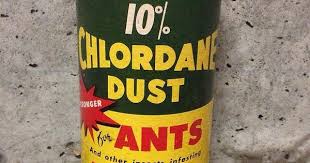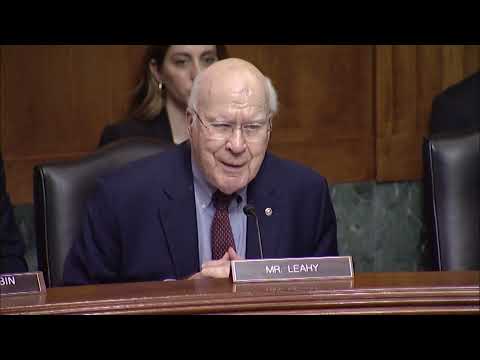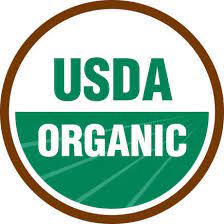Texas and the National Organic Label part 6
Kathleen Merrigan was a key player in the legislative creation of a National Organic Standard. Passage of a national organic standard had to be accomplished without the help of the United States Department of Agriculture. Fortunately, Merrigan had the support of the Texas Department of Agriculture.
Kathleen Merrigan hailed from Massachusetts. For some bizarre reason, she went “abroad” and enrolled for her graduate degree at the LBJ School at the University of Texas. She somehow managed to get a part time job at the Texas Department of Agriculture, where she focused on agriculture and pesticides.
“I was all about pesticides that second year through my work at TDA and my professional report. It was all-consuming.
I worked 20 hours a week at the Department of Agriculture. I was also a research assistant for Tom McGarity in the Law School at UT. I was asking for his help in my master’s thesis. His specialty was administrative law. He had been very involved in that area of pesticide regulation. His deal was I could have access to all his files if I organized them for him.”
Even though she was a part time employee at the TDA, she was assigned important duties.
“My job at TDA was interesting. I was tasked with being the liaison between TDA and the Structural Pest Control Board. Texas, like California, divides up pesticide regulation depending on whether it’s urban or agricultural. I was very involved with looking at how we were communicating and regulating termiticides. Back in the day there was a lot of concern about chlordane which has since been banned.”
Because of concerns about damage to the environment and harm to human health, the EPA banned all uses of chlordane in 1983 except to control termites. In 1988, EPA banned all uses. The acute (short-term) effects of chlordane in humans consist of gastrointestinal distress and neurological symptoms, such as tremors and convulsions. Long term exposure causes more severe problems. Kathleen Kerrigan worked at the TDA is those in-between years when the TDA was trying to alert urban homeowners of the dangers of chlordane.
“TDA was pushing on having more progressive policy around pesticide use in the agricultural community and we didn’t want to leave the urban pesticide use way far behind, so my job was to try to help push structural pest control to a more progressive place.
After graduation, Kerrigan was offered a full-time job at TDA but decided to move back north. But she remained involved with agriculture policy.
“I got a job with the Senate Agriculture Committee. The Democrats had just taken over the Senate and Pat Leahy from Vermont was the new Chair of the Senate Agriculture Committee. I wanted a job with the Ag Committee, and I got it. I packed my bags after graduating and went to Washington DC. But a part of me was concerned. I loved Jim Hightower and I loved the people I worked with.”
But all was not lost. Those people at TDA that she knew and had worked with kept popping up in her career, especially in the development of national organic standards.
“Later in my career, I certainly did work with TDA when I was working on the organic legislation, starting in 1988. The law passed in 1990. Texas was one of the few states that had a state law, a state program around organic. Washington State and Texas were the most active when we were developing national legislation. I worked with Keith Jones. I dealt with TDA and they were very supportive and involved. Later on Keith Jones became the director of the National Organic Program at USDA.”
Texas having the first Organic Label and that Label being popular and timely was what ultimately led to the creation of national standards, which, although minimal and less stringent than the Texas standards, were at least consistent.
“The real problems of interstate commerce, because what was organic in Texas was different than Vermont, or CCOF. There were problems of fraud because it was right after the big controversy about alar use. Meryl Streep was on “60 Minutes.” It created a panic for organic, as it was called. Alar was a pesticide used on apples, kids eat apples. All of a sudden you had a lot of new entrants into the organic marketplace who didn’t have history. There was a lot of anxiety that people were there for a fast buck and were not necessarily honest about what was being sold. Then there was a concern that people who were certifying were not qualified to do so. A big part of the national legislation is about accreditation of these private agents as certifiers. It’s an interesting law in that it’s a public private partnership approach which is different than most of what USDA does.”
The USDA was unenthusiastic about the standards and lagged badly in its formal writing of the regulatory standards. After 10 years of dithering by the USDA, Merrigan was hired to finalize the national standards.
“I came into USDA for the first time in the year 1998 or 1999, because the organic rule making had been a big bust. It had the second highest public comment to a federal rule making in the history of government, 275,603 letters, including my own which was over 100 pages single spaced, about why the proposed rule was not good, and they were just stuck. They invited me in to be the administrator of the Agricultural Marketing Service. The National Organic Program is within the Agricultural Marketing Service. I got to work with Keith for a couple of years to get to a second proposed rule and then a final rule at the tail end of the Clinton administration.”
Given the current state of Texas politics, people need to be reminded that the TDA organic standards were higher than the USDA. The Senate report on Organics clearly states that organic does mean that it is healthier than conventionally produced food.
“That political rhetoric was necessary at the time. We just had to suck it up and say “yeah, this is for the crazy people who really want organic” and try to get the needle threaded. For a national law like that to pass that was so novel, it would normally take multiple years of deliberation
It was unusual for Organic Standards to get passed in the face of a hostile USDA. Most people who battled the USDA usually ended up losing their jobs. Jim Hightower was voted out of office in 1991, and Garth Youngberg who wrote a USDA report on the superior possibilities for organic in 1980 was fired.”
Without the Texas Organic Label being trusted and popular, there never would have been a National Organic Label.
“USDA that had been historically hostile to organic. Why would all of a sudden you empower them to take it over and inspect people. I had a person when I went in as AMS administrator tell me that, when I was a staffer on the Senate Ag Committee, they were told not to return my calls and if I caught them on the phone and they were just stuck, to mislead me and give me wrong information. This is the kind of hostility. I also worked for five years for Garth Youngberg, who founded the Institute for Alternative Agriculture. He was an economist who wrote a study on organic farming that caused him to be fired. He was rewarded with a MacArthur Foundation Genius Award and he’s got money to start up the Institute. Anyhow, there’s this whole very dreadful horrible history about how organic had been treated at USDA, and they didn’t want it. They fought against having it as part of the 1990 Farm Bill. Why would you put them in charge of certification? That’s kind of crazy.”
Thank Texas and thank Hightower and thank all the talented staff at the 1980s TDA for your organic section at the grocery store.


